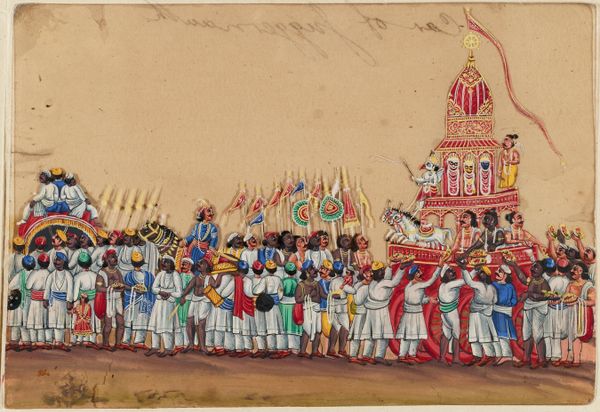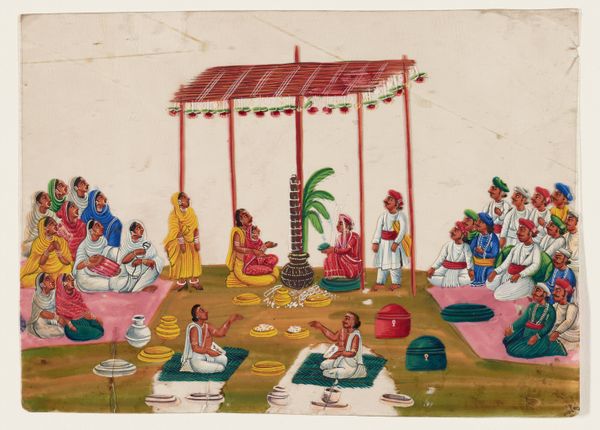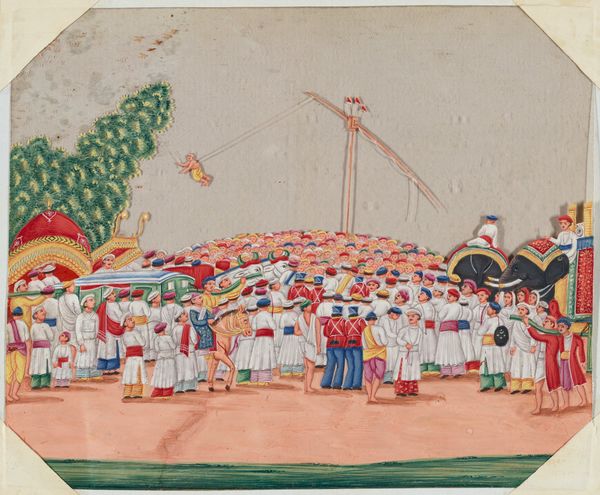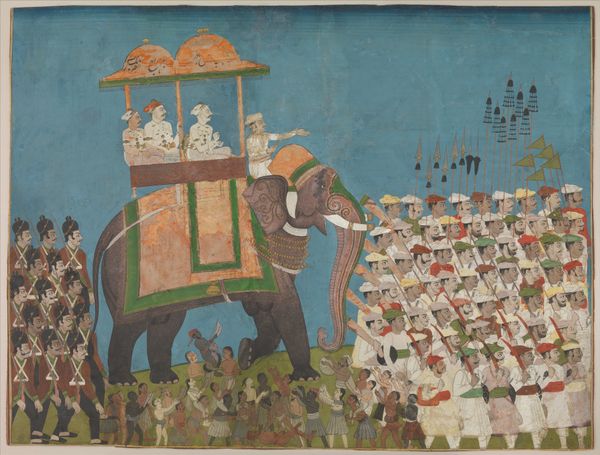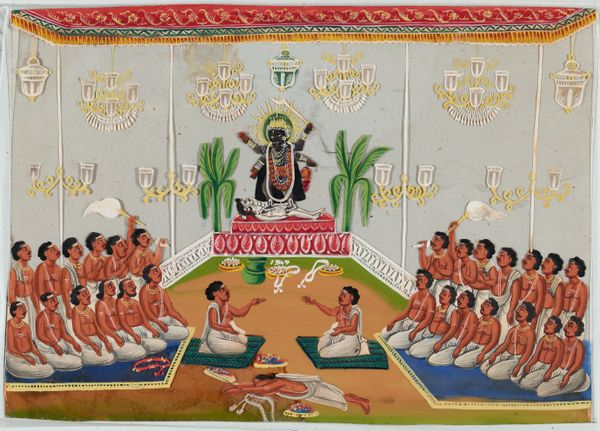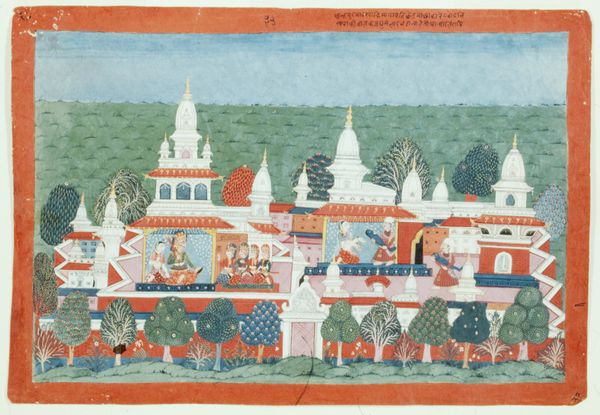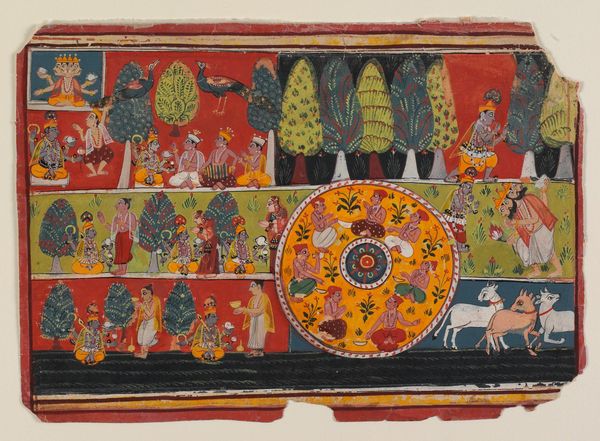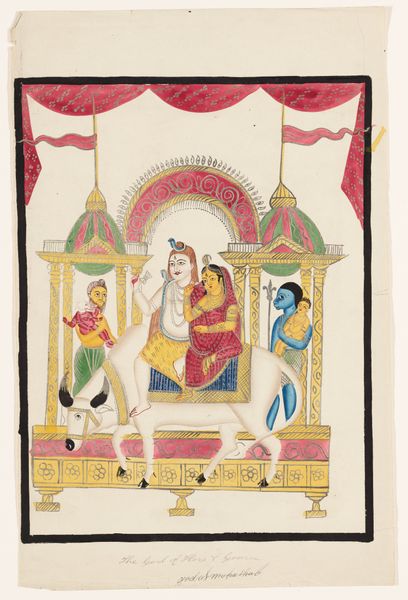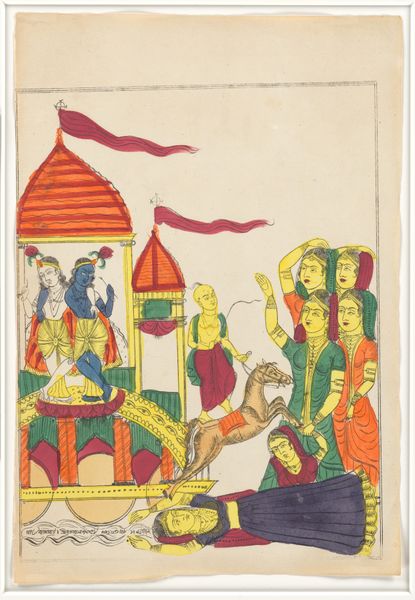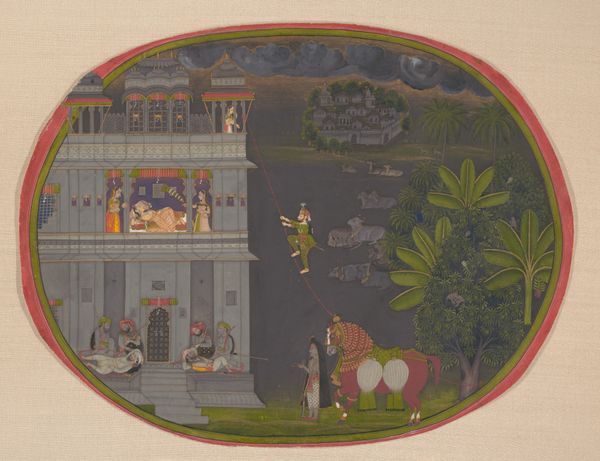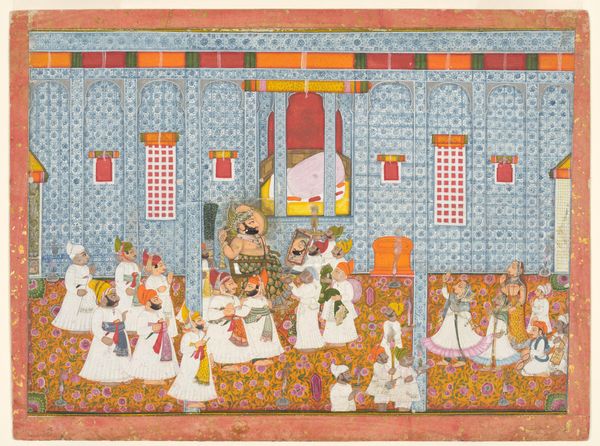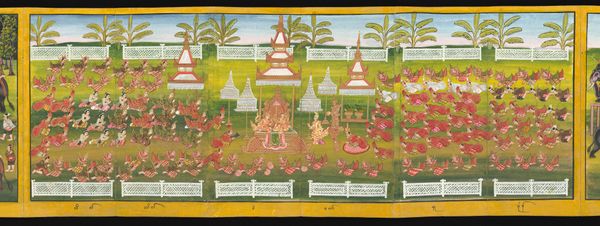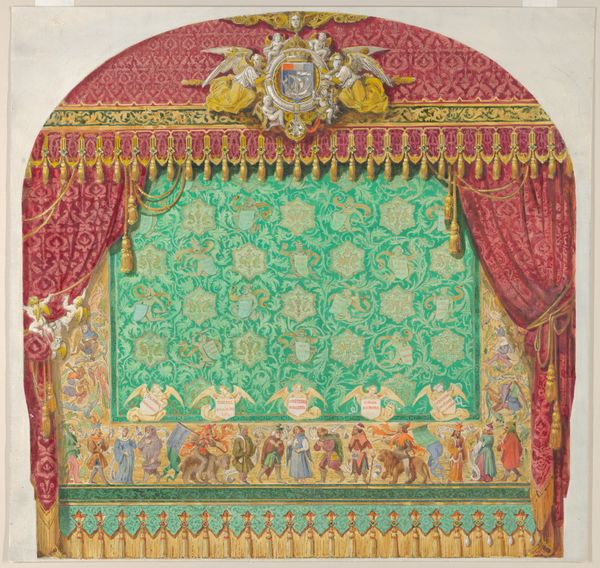
painting, watercolor
#
narrative-art
#
painting
#
asian-art
#
landscape
#
figuration
#
watercolor
Dimensions: 5 11/16 x 7 13/16 in. (14.4 x 19.8 cm)
Copyright: Public Domain
Curator: This watercolor painting is called "Festival with temple carts" and dates back to around the 19th century. The artist remains anonymous, and it's now part of the collection at the Minneapolis Institute of Art. It captures a vibrant street scene in Asia. What strikes you first about this artwork? Editor: The sheer geometry, actually. It's incredibly orderly for such a lively subject! The figures and their banners, musical instruments, the temple carts—all arranged with such a rhythmic, repeating visual pattern. The red accents pop, especially against that neutral ground. Curator: Indeed, the visual order speaks to a carefully orchestrated public display. Religious processions and festivals were crucial civic events. This painting documents and, to an extent, reinforces those structures. Consider how the hierarchy is presented: the figures on the temple carts are clearly elevated, literally and symbolically. Editor: Absolutely. The perspective flattens, almost becoming a visual record instead of aiming for true spatial depth, but that really emphasizes the patterned repetition. The white and the careful, somewhat detached execution gives everything a feeling almost like…architectural documentation? It's the order being placed *onto* experience. Curator: I find it quite illuminating when considering how the festival reinforces community bonds. Look at the way the architecture becomes a spectacle itself, how this art piece provides a means of documenting cultural expressions. Editor: But do the repeated shapes perhaps distract from the unique individuals who are part of that festival? The architectural lines feel more powerful than the characters moving underneath. Are the people the main focus, or are they parts of some giant composition? Curator: That tension, I believe, makes the work particularly engaging. There’s the communal versus the individual and how political and religious orders often attempt to incorporate every being in its grand designs. It highlights how art provides social records. Editor: And through its structure, visual cues, and that muted yet celebratory palette, it makes a powerful statement of form and society, a sort of beautiful control. Curator: Exactly, a controlled spectacle, carefully documented for posterity and shaped by powerful structures. A glimpse into how festivals helped make and maintain cultural power.
Comments
No comments
Be the first to comment and join the conversation on the ultimate creative platform.
